People
David and Sybil Yurman on Love, Life, and Making Jewelry
For David and Sybil Yurman, their jewelry, like their art, is all about emotion and the unconscious.
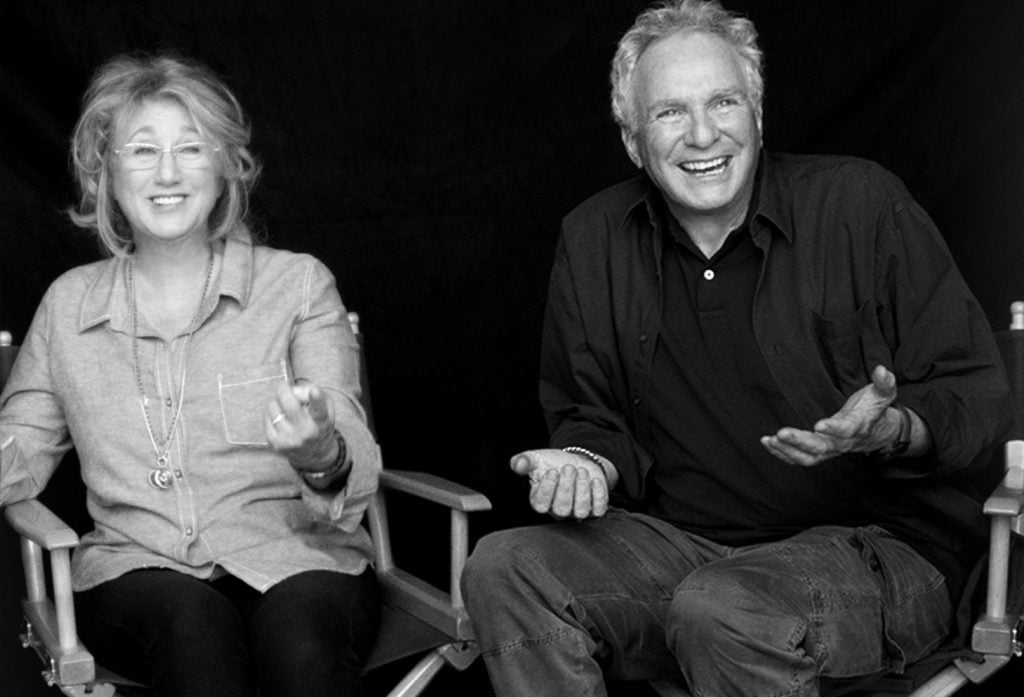
For David and Sybil Yurman, their jewelry, like their art, is all about emotion and the unconscious.

Rozalia Jovanovic

When David Yurman was in his 20s, he made a necklace for his then-girlfriend, Sybil Kleinrock. A sculptor, Yurman welded together diabolical bronze figurines into a piece he called the “Dante.”
“I asked him if he could make a piece that I could actually wear, from one of his sculptures,” said Sybil, “because I was really seduced by them.”
When Kleinrock, who was a painter, wore it to an art opening, the gallery owner wanted to buy it right off her neck. But Yurman objected. It was too special. Kleinrock wanted to sell it, thinking it might be good for business. A few years later, David and Sybil would be married and the founders of a fine jewelry company, Putnam Art Works. In 1980, they founded the brand David Yurman.
But the story of the Dante necklace represents everything about the artistic duo that is unique to their relationship and to the company. Both David and Sybil began their careers as artists, and still practice. They were brought together in the studio of sculptor Hans Van de Bovenkamp, where they both worked, and to this day art and collaboration remain at the heart of their life and their work. Even the act of talking feels like a project done together: they finish each other’s sentences or one will toss in colorful interjections while the other is speaking. They’re still so clearly excited to be around each other.
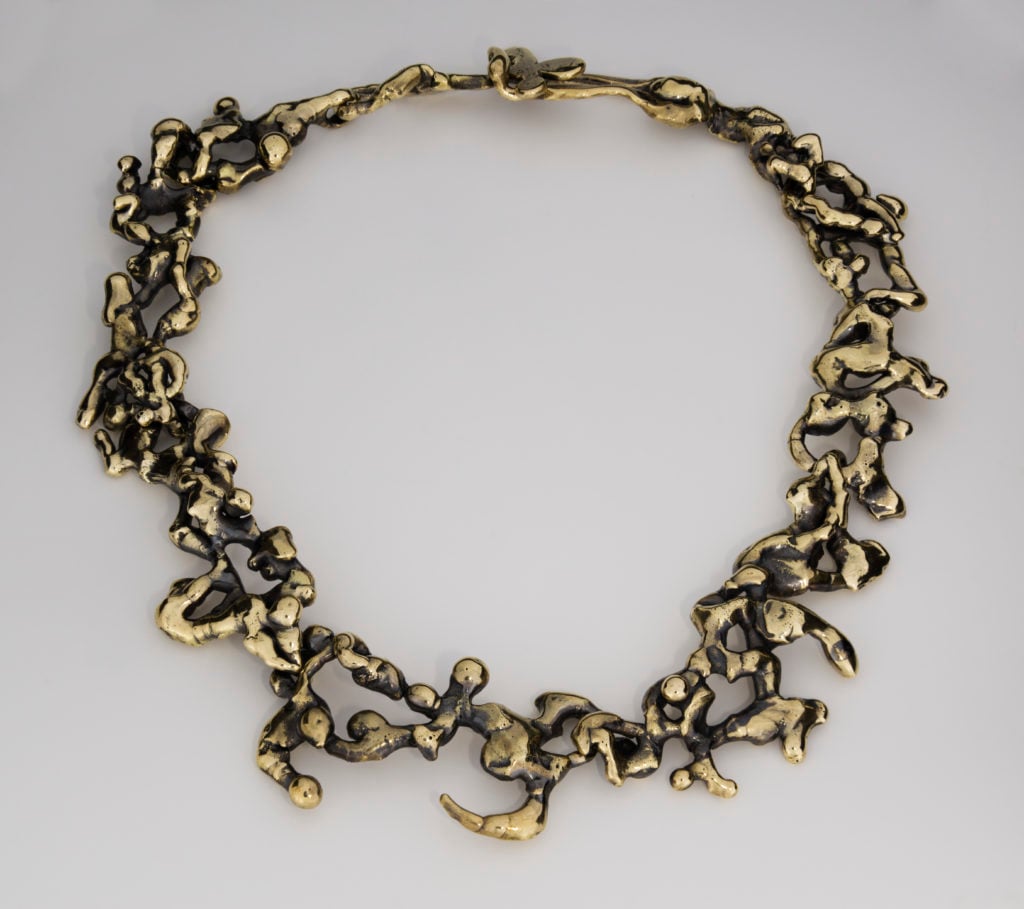
David Yurman, Dante Necklace. Courtesy of David Yurman.
As they did from the start, David and Sybil still rely on his sculpture and her sense of color for their designs (David is the co-founder and lead designer, while Sybil is co-founder of the company). A recent jewelry line takes inspiration from a series of Sybil’s paintings that features a giant “X”—one such painting, of a lusty X in red against an orange and silver background, could be seen in the lobby at DY headquarters in Tribeca. These works were the impetus behind the Solari collection, which features gold sculptural spheres and the “X” symbol in micro-pavé diamonds.
David, who is from Long Island, began learning metalwork in his teens. Upon graduating from NYU, he apprenticed with modernist sculptor Jacques Lipchitz then started a sculpture studio in Greenwich Village. After working together under Van de Bovenkamp, the couple moved to Carmel, New York, where they would make their start in fine jewelry.
David continues to sculpt, and Sybil paints, in a studio space adjacent to their home in Tribeca. And their engagement with the art world also continues to the present. In 2016, David’s sculptures were on view at “The Voyage of Art and Jewelry,” an exhibition at New York’s ADAA Art Show, which included the Dante necklace as well as some of David’s early sculptural works along with contemporary jewelry.
In 2013, the Museum of Arts and Design honored them with its Visionaries award. The Yurmans have also given back to the community through support of charitable causes with the establishment of the David & Sybil Yurman Humanitarian and Arts Foundation. Created in 2001, the foundation gives awards to individuals who support charities and the arts and supports the Whitney Museum of American Art and the Studio in a School, both in New York, as well as the Make-A-Wish Foundation.
The company’s ad campaigns are also known for their artfulness. In 2000, David and Sybil worked with legendary photographer Peter Lindbergh to create a campaign starring the models Amber Valetta and Kate Moss that was more intent on featuring a fun, irreverent, and casual attitude toward life than it was about jewelry, per se. This month, they kick off another campaign, this one shot by Bruce Weber in the Florida Keys with Natalia Vodianova and Taylor Hill. “It’s not about jewelry,” Sybil said about the campaigns. “It’s about a lifestyle; it’s about how you live your life.”
I met David and Sybil at the company headquarters, in a room that had a lattice of fresh flowers affixed to the ceiling—prep for an event later in the evening—and some pieces of David’s sculpture on a nearby shelf. The flower arrangement, Sybil told me, was inspired by the garden at their home, a few blocks away. As with everything they do, it seems, their art mimics life, and life comes first.
THE EARLY DAYS
Rozalia Jovanovic: What were the early days of your artistic life in New York like?
David Yurman: We were part of what was considered the counter culture. We were living on 99th street and the West Side Highway. At that time, I was working with Theodore Roszak, on Saint Luke’s place. Before that I was working as an apprentice to Jacques Lipchitz for a little over a year. So I basically took care of his studio. Mostly, I worked for him building sculptures and working in the foundries. Same thing with Roszak two years later. So, two years with Lipchitz, two years with Roszak. I ran Roszak’s shop and installed his sculptures.

Jacques Lipchitz and David Yurman. Courtesy of David Yurman.
RJ: What was your art practice like at that point, when you were working for Theodore Roszak? Were you sculpting every day?
DY: Working with great masters like Jacques Lipschitz and Theodore Roszak, this is really when I developed a point of view and a focus, learning and practicing discipline: everyone showed up to the studio every day for work.
RJ: You met in 1969, while you were both working for sculptor Hans Van de Bovenkamp. What was it like to work together?
DY: Well, Sybil came. I was working for Hans and I was doing a sculpture for a business office. Not so different than Rembrandt doing his prints and selling thousands of prints all over the world that kept him alive. But the deal was that I was Hans’s top manager and I was also making the individual sculptural fountains that he was selling in multiples. So there were about seven of us in a big studio.
SY: I worked on the commissions with them. They did all kinds of sculptural work there, big and small. David was one of the foremen there.
RJ: Sybil, when did you start painting? Did you go to art school?
SY: In the late 1950s I moved to San Francisco’s Haight-Ashbury district, where I met a number of influential figures, like Allen Ginsburg, Peter Orlovsky, Jack Kerouac, and Neal Cassady. The influence of the Beat movement encouraged me to pursue my passion for painting. I then attended SUNY Purchase in the early ’70s where I procured my BFA. There, I began a series of paintings that were actually mixed media, works on paper. The paper was originally laid on a wall or surface with existing textural markings—peeling paint, spackle, or tape.
RJ: How did you arrive at the studio of Hans Van de Bovenkamp?
SY: I was living on Martha’s Vineyard. A girlfriend of mine got me the job. She said, “My friend needs to leave her job in New York and she can’t leave until someone takes the job and you should not stay on Martha’s Vineyard.” I was 25.
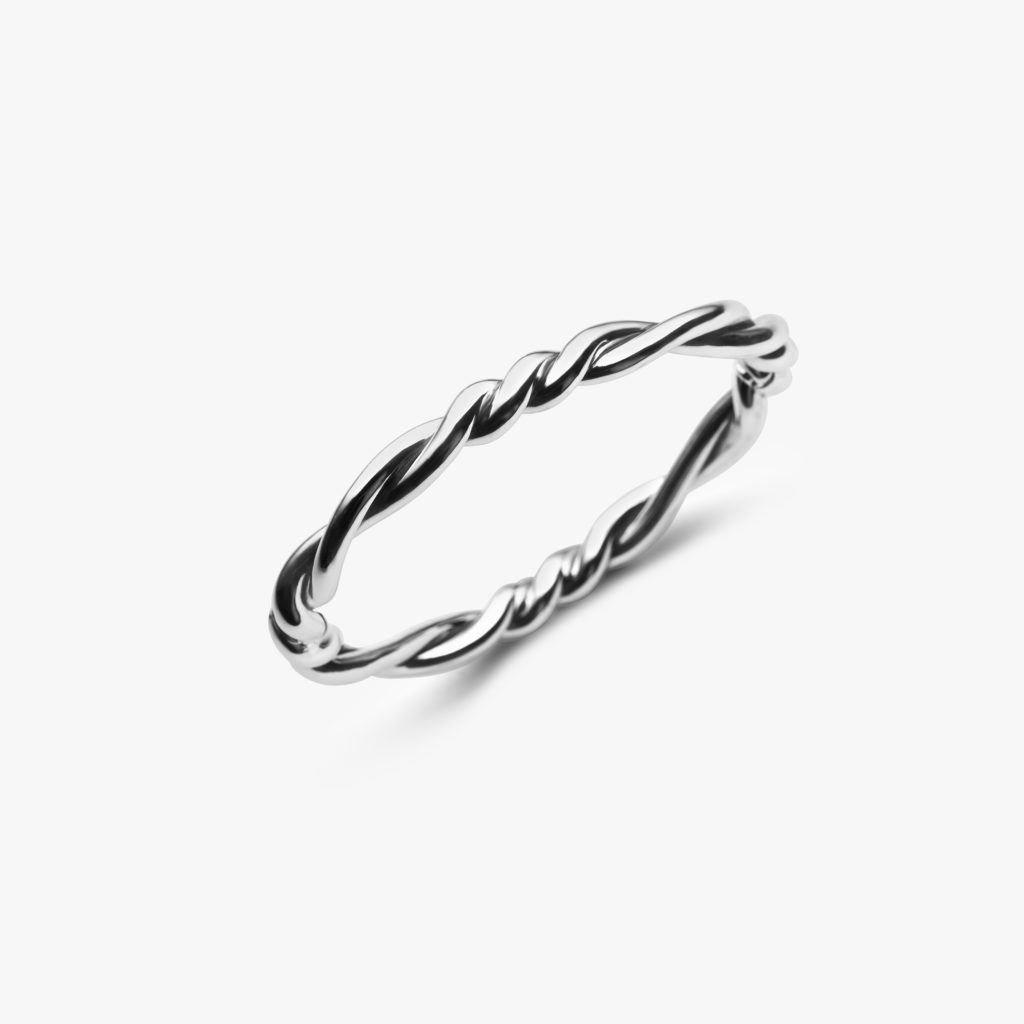
David Yurman, Continuance Bracelet. Courtesy of David Yurman.
So I went to the interview, met the woman and then she introduced me to this group of sculptors and David was one of the men. And I had a reaction. I asked who David was. I said, “Oh, is he married?” And she said, “No.” Then it turns out he had asked about me. Part of my job was to work on the proposals, and to do some of the cutting of the copper, and welding small pieces. And I would get to work with David. We liked each other from when we first met. He used to bring me coffee in the morning—I didn’t tell him I didn’t drink coffee.
RJ: Were you in any gallery shows?
SY: I was in a show at Barbara Gladstone Gallery.
RJ: How did you like that experience?
SY: Well, I didn’t realize what I had gotten myself into. Eric Siegeltok, who worked for Barbara at the time, called me up and asked if he could come over and see my work. We lived on Franklin Street. He came to my studio and he said, “Okay. We’ll take one.” So, they took one and then he came back a couple of days later and took another piece and then called and took four pieces for the show. They sold all the pieces. But it was very difficult for me because I didn’t understand anything about the gallery world. I was really young and we had no money. They wanted you to frame your work, and deliver it. So, I also had to get a friend to deliver it on the train.
RJ: That seems like a burden for an artist to have to think about and handle.
SY: I was not equipped to do that at the time. So then I had another show at a gallery, a one-woman show. And that show they took care of transporting the work and things like that. Then again, they sold all the work, but I kept one piece from it. We just said it wasn’t for sale—I was learning.
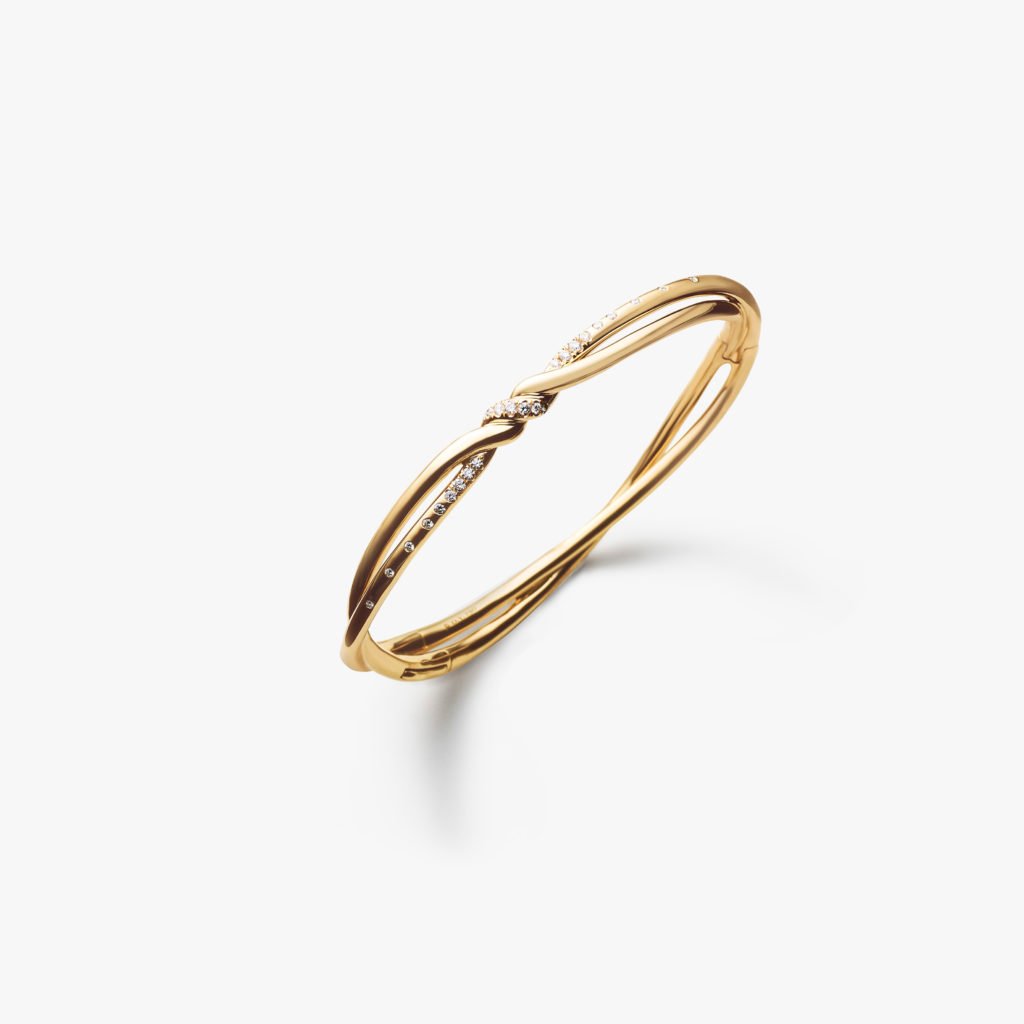
David Yurman, Continuance Bracelet with diamonds. Courtesy of David Yurman.
RJ: These days, artists are more aware of their careers before they’re even out of school. It seems like it was very different then.
SY: Yeah. When we were young, you didn’t show your work for at least 10 years. If you sold your work, you were not looked at very favorably. As a matter a fact, I remember I had a professor who was like, “You are showing your work? That is unacceptable.”
And then, when I had our son, I couldn’t do all three things. I couldn’t be a mom, paint, and then work here. I really thought I could go home and cook dinner every single night. I really thought I could and build my loft. I did all those things though. I just did what was necessary.
RJ: Are you still painting? How do you make time for it?
SY: Yes, I have a studio here. I also have a studio on Long Island. When the loft next door to our apartment became available, we took it and that became my painting studio and his sculpture studio. We are both working when we can and we are making more and more time to do that. In a way David’s motto is, “Be careful what you wish for.” We never wanted a business. And now we are getting more time to do our work.
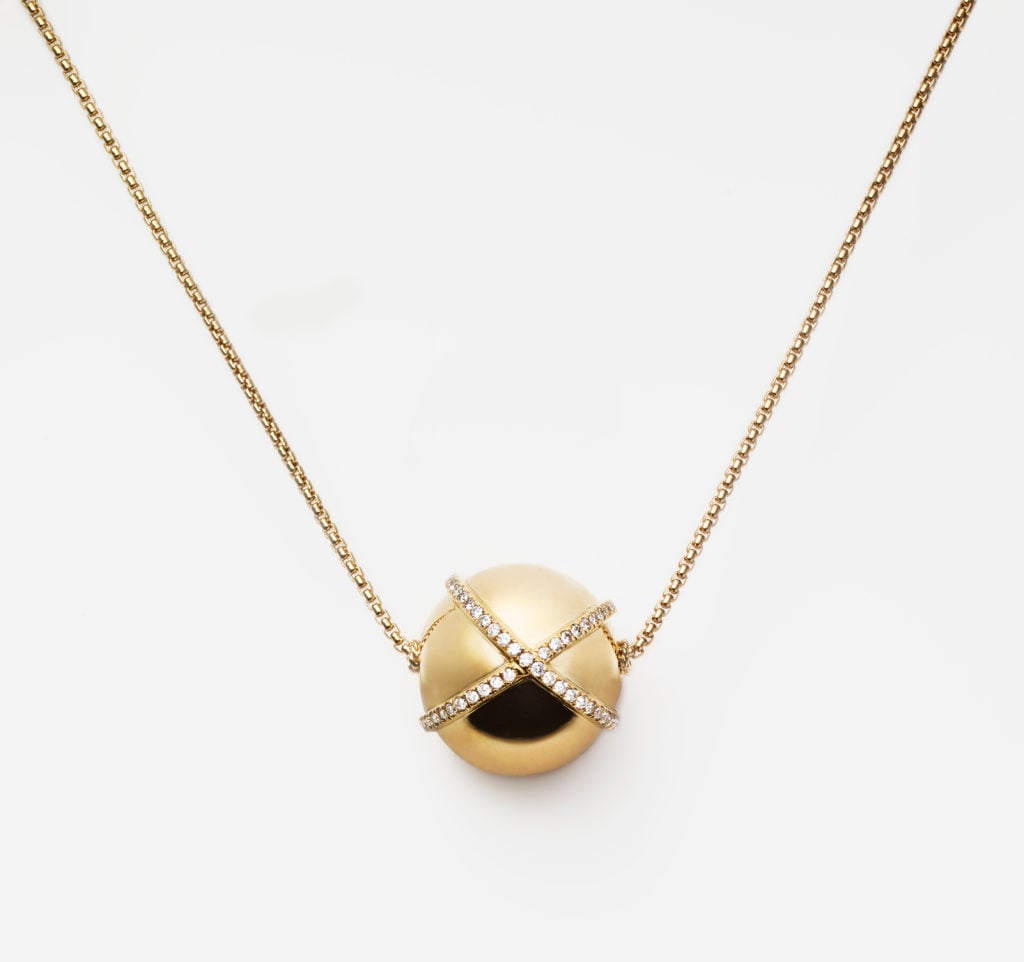
David Yurman, Solari necklace. Courtesy of David Yurman.
A BURGEONING BUSINESS
RJ: Can you tell me the story of the Dante necklace?
SY: The Dante necklace? Oh, it is one of my favorite things. I was painting at the time and Dave was making these beautiful sculptures and I asked him if he could make a piece that I could actually wear, from one of his sculptures, because I loved having them and I was really seduced by them. So he made me this beautiful necklace to wear and it was two figures. So again it was all about emotion and the unconscious, and he wouldn’t know what he was going to do when he sat down to work. He just started working from an emotional point of view. We both actually work the same way. So I never plan what I am going to be working on.
RJ: At that time, how did your work relate to the business?
SY: For a long time, I helped finance the business with my work, my lithographs, and then with my drawings.
RJ: How does art inform jewelry?
DY: Totally, in every way. There is no separation. Jewelry obviously has to fit on the body; jewelry is a business; but making it and creating it comes out of the same pool. It’s the same river.
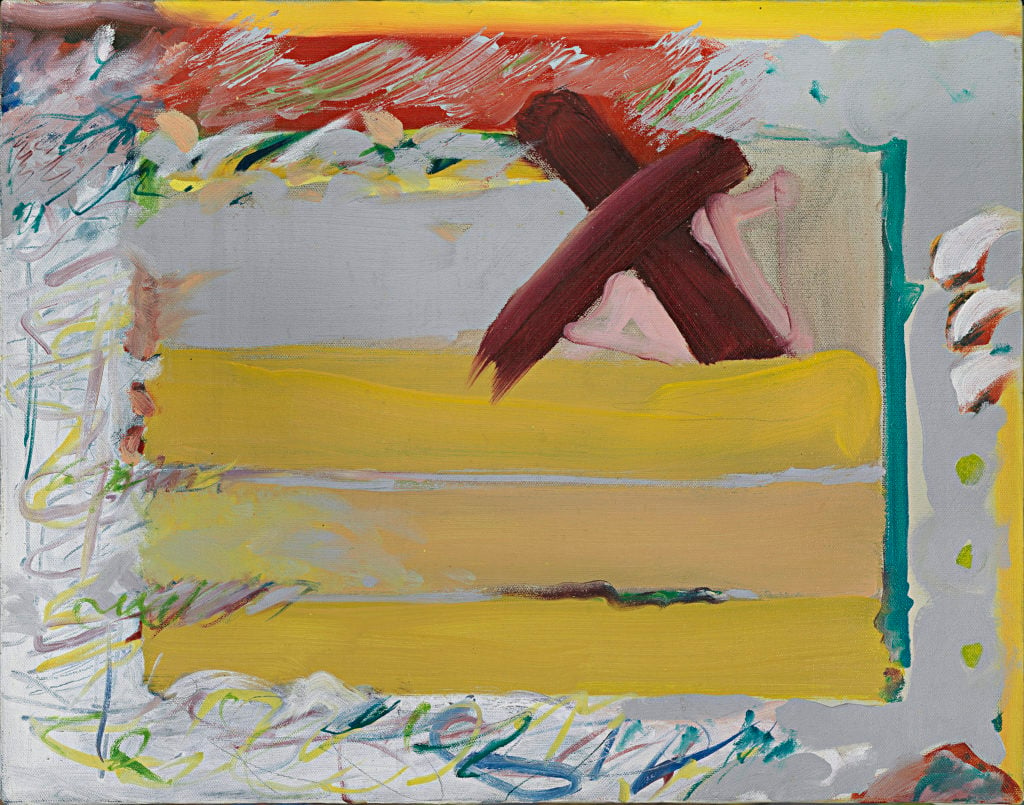
Sybil Yurman, X Painting. Courtesy of David Yurman.
RJ: How is the process of sculpting different from creating jewelry? Can you describe your process a little?
DY: Creating jewelry is much more collaborative. But when we started making sculptural jewelry, and more mainline jewelry, we probably started doing more collaboration because it worked really well. We would ask ourselves, “What’s going on in the world? What do we feel that we can bring into the world? We are going to draw on David’s sculptures, Sybil’s sense of color.” For instance, there is a painting Sybil did and we just reproduced it. Sybil did a series of paintings where there is this big ‘X.’ So I said, “Why don’t we run on this?”
RJ: You were in your ‘X’ mood?
SY: Yes. Emotion is essential. We’ve never done our jewelry work from a place of “Let’s make a living” or “Let’s make money.”
DY: We’re never like, “We need the hot number.”
SY: We never set out to make a business. It was always done from a similar place as the way we painted or did sculpture. Which was a private moment and it really was about, as David says, dreaming with our hands.
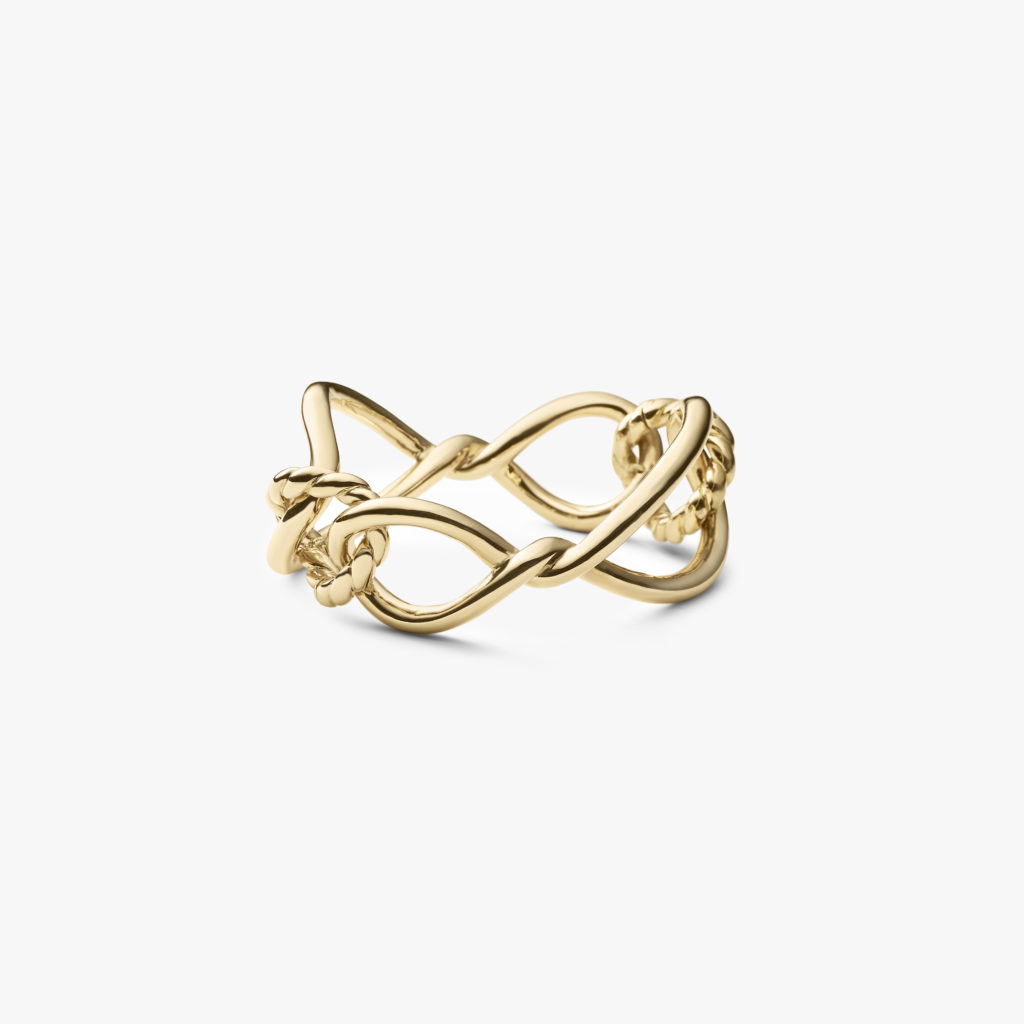
David Yurman, Continuance Bracelet in 18-karat gold. Courtesy of David Yurman.
RJ: So the jewelry can be worn by men and women?
DY: Some of the pieces are worn by both men and women and then there are men’s collections and there are women’s collections. But the men are buying jewelry for their wives, girlfriends, mothers—they can relate to it, because it has my hand—I’m not a jeweler, I am a sculptor. It’s not fussy. It has Sybil’s critique. There is not a piece that we make that Sybil doesn’t have her hand and her eye involved in.
We go back and forth all the time. It is a very slow, agonizing process; sometimes it’s upheaval but at the end of the day, we say, “You know what? We get a better product.” We really do. If I just run the whole thing straight out, and Sybil’s not involved, there is something missing. There is a male-female counterpart in every piece.
THE CAMPAIGNS
RJ: The advertising campaigns for the company are very artful. The ones you did with Peter Lindbergh in the ’90s were unlike anything that was happening in terms of jewelry advertising at the time. Does your art practice inform those campaigns at all?
SY: Well, both David and I both loved photography. That informed the kind of work we wanted for the campaigns. We did all the original campaigns ourselves.
For us it was just a natural evolution. The whole idea of everything that we did was just to be able to be creative and to have fun—”fun” was the operative word. We like working together and sharing our ideas. The advertising was a natural outgrowth of that.
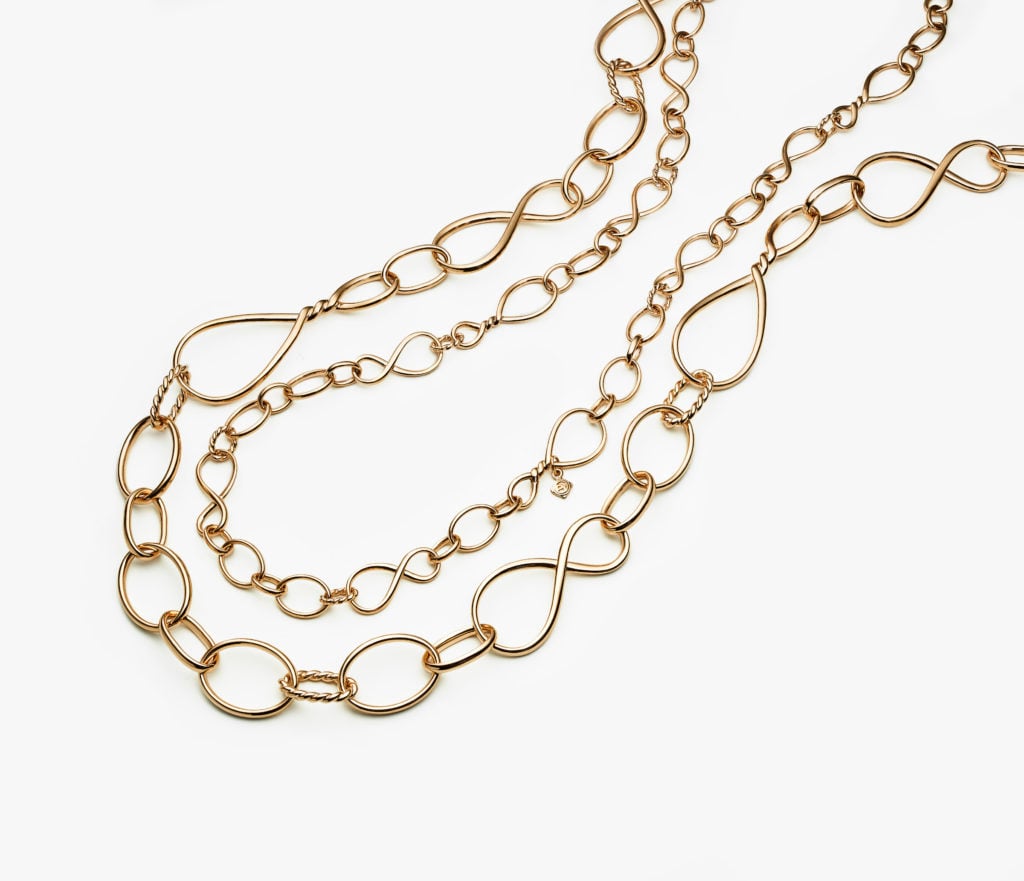
David Yurman, Continuance Necklace. Courtesy of David Yurman.
SY: And our customers really picked up on the playfulness of it. We asked, “Who are the people that are buying what we make?” and decided, “Let’s tell them who we are rather than show a piece of jewelry.” Because it’s not about jewelry. It’s about a lifestyle; it’s about how you live your life. The fun, the play, the interchange with another human being. So the first campaigns were really about a reflection of us: if the ad showed people eating, we were really eating. And if we were drinking, there was a bottle of wine on the table.
SY: Peter Lindbergh was, for us, the obvious choice.
DY: To begin with, he’s an art photographer. Even his fashion shots have this root in art. He connects to his visceral emotions with the content. We did campaigns for 15 years, which is a long run.
RJ: For your most recent campaigns, you’ve been doing color photography, which is new for you again, right?
SY: We are more into playful scenes.
DY: Yeah, we are in transition.
SY: As we have gotten older, we are really much more playful, and not as intense. So, we got some great dancing shots. Great dancing music. We like to dance. So it’s really a reflection of us.